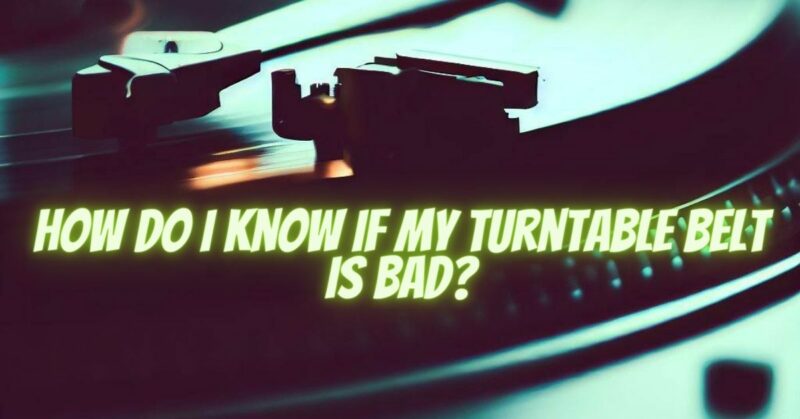The turntable belt is an essential component that drives the platter and ensures smooth and accurate rotation of your vinyl records. Over time, turntable belts can experience wear and tear, leading to potential performance issues. In this article, we will discuss common signs that indicate a failing turntable belt, helping you identify when it’s time to replace it and maintain optimal playback quality for your vinyl collection.
- Inconsistent Speed:
One of the primary indicators of a failing turntable belt is inconsistent speed. If you notice that your turntable’s rotation speed fluctuates or the pitch of the music varies, it could be a sign that the belt is worn out. Listen closely for any noticeable speed variations or pitch fluctuations during playback, as these can indicate a compromised belt.
- Slipping or Stalling:
A failing turntable belt may slip or stall during operation, resulting in interruptions or an inability to maintain consistent rotation. If you observe the platter stopping or slowing down abruptly while the motor continues to run, it suggests that the belt is slipping or losing its grip. This can negatively impact the playback quality and lead to skipping or distortion.
- Belt Slippage on the Pulley:
Inspect the belt’s position on the motor pulley and platter. If you notice the belt slipping off or not staying in place properly, it indicates that the belt has become loose or stretched beyond its optimal tension. A loose or misaligned belt can cause playback issues and generate unwanted noise.
- Visible Wear or Damage:
Examine the physical condition of the turntable belt. Signs of visible wear, such as cracks, fraying, or thinning, indicate that the belt has reached the end of its lifespan. Over time, exposure to heat, humidity, and repeated use can cause the belt to degrade. If you notice any visible damage or deterioration, it’s a clear indication that a replacement is necessary.
- Age of the Belt:
Consider the age of your turntable belt. Most turntable belts have a recommended lifespan, which can vary depending on factors like usage frequency and environmental conditions. If your turntable belt is significantly older than its recommended lifespan, it’s prudent to consider replacing it even if you haven’t noticed any specific issues yet. Preventive replacement can help avoid potential problems and maintain consistent performance.
- Increased Noise or Vibrations:
A failing turntable belt can generate additional noise or vibrations during playback. If you notice an increase in unwanted rumbling, humming, or vibrating sounds, it may indicate that the belt is no longer functioning optimally. These noises can interfere with the audio quality and overall listening experience.
Conclusion:
Monitoring the condition and performance of your turntable belt is essential for maintaining optimal playback quality. If you observe signs of inconsistent speed, slipping or stalling, belt slippage, visible wear or damage, an older belt, or increased noise and vibrations, it’s likely time to replace the turntable belt. Consult the manufacturer’s guidelines or seek assistance from a reputable audio equipment supplier to ensure you select a compatible replacement belt for your turntable model. By addressing a failing turntable belt promptly, you can continue to enjoy your vinyl collection with smooth, reliable, and high-quality playback.


